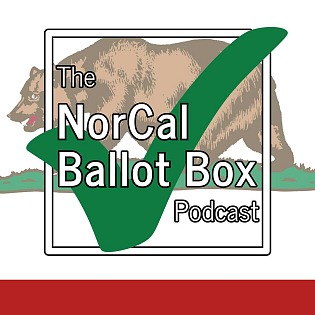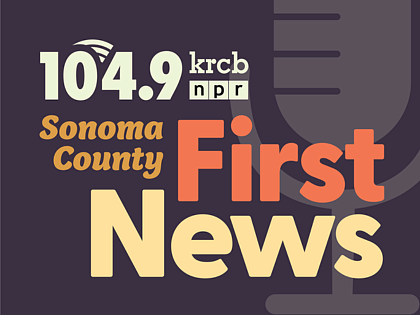
photo credit:
This morning at 11 am, people will be rallying in Los Angeles to save their jobs, their livelihoods and their very industry, they say. Others will join a socially distanced crowd in front of the San Francisco headquarters of state utility regulators to oppose moves that many say are a bald-face money grab by PG&E.
One that will sabotage the state’s green future.
Imagine I plant and tend a kitchen vegetable garden. It regularly feeds my family and if I have a bountiful harvest, I can give away or even sell all those extra zucchini or tomatoes. But does my growing my own vegetables increase the cost that you pay for zucchini and tomatoes at the grocery store? Most would say, no way, there’s no connection.
That vegetable garden analogy is one of the arguments against a new plan that may well become reality on January 27. It’s a ruling by utility state regulators, the California Public Utilities Commission or the CPUC, that would significantly change the cost and benefits of putting solar panels on the roofs of your home or business.
The CPUC says it’s working to “evolve decarbonization incentive efforts to meet the state’s groundbreaking clean energy goals.” It says its changes to the way roof-top solar works will “balance the needs of the electric grid, the environment, and consumers.”
“With this change, it kills solar," said Phil Alwitt. “It contradicts California's goals of…California now requires solar and all new homes and commercial buildings and things of that nature, and this basically kills that."
Alwitt is CEO of SolarCraft, one of the largest rooftop solar installers in the North Bay. He says the state’s Net Energy Metering program, or NEM as it’s known, has worked well for years. Most agree that rooftop solar in California has been a success story, there’s an estimated one point three million solar rooftops across the state.
Alwitt said he’s been in the solar business for 15 years and has seen ups and downs…the solar-coaster industry he jokes. There have been changes over the years to net metering that made it less economical for the consumer, but nothing like what’s happening now.
“You put solar panels on your rooftop, you're gonna pay a new fee between $30 and $90 a month…that's the first part of the utility proposal,” said Dave Rosenfeld. “And then the second part is to slash the credit that solar users get for sharing their extra solar energy with the community.”
Rosenfeld heads the Solar Rights Alliance, a group of solar users from across the spectrum all opposing the proposed new changes, which they say is another profit grab by PG&E and the two other investor-owned utilities in the state.
“If they get even close to what they want, it's basically going to double the cost of going solar,” Rosenfeld said. “And for all those middle and working class people that are finally now able to get their hands on this incredible technology, they're not going to be able to get it anymore. And we're gonna go back to where we were 15, 20 years ago, when the only people that could get solar were rich people.”
According to solar industry advocates, over 120,000 people have signed a petition or sent letters; you can find 500 of those on the CPUC’s website. Every single one is strongly opposing the new plan, appealing to the Commission to vote against it at the end of the month.
“Please stop this,” said John Randazzo of Santa Rosa in his comment, saying “these measures will de-incentivize the transition to a cleaner world.”
Joseph Zils of Santa Rosa in his submitted public comment wrote the new plan is “not only regressive, it also seems to be discouraging the exact type of investments needed to address the impending climate change we are all facing. Rather than making the transition to solar more expensive, we should be providing further incentive to encourage people to convert to this renewable, clean alternative energy source to power their homes and businesses.”
Keith Kruetzfeldt is the owner of Suntegrity Solar in Santa Rosa. He said with the proposed changes a rooftop solar system that historically would have paid for itself within six or seven years could now take 15 years or more to recover the costs.
“You know, the simple reality is, as much as our customers appreciate the green aspects of solar, the ultimate driver is the financial savings they see,” Kruetzfeldt said. “And when they see a 15-year payback period, they're going to lose interest. With this proposal, solar in California will plummet. I mean, it'll basically be like a switch going on overnight and we'll probably see demand for solar drop by at least…I would guess 80% for rooftop solar.”
In a series of stories over the coming days, we’re going to hear more about what the proposed plan is and how it could affect not just the rooftop solar industry, but California’s clean energy future. And please use the contact us form on our website to contribute to the conversation. Because the plan on the table has far-reaching consequences. As Kruetzfeldt says, when the CPUC announced in mid-December the proposed decision, it galvanized many.
“It wasn't a big surprise because we knew the head of the NEM commission for the CPUC was basically entrenched with utilities,” Kruetzfeldt said. “So the fact that they came out with something that was highly in favor of the utilities was not a shock. Obviously incredibly disappointing, but we now know we have a fight on our hands to make sure it doesn't go through.”

 Live Radio
Live Radio




